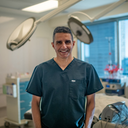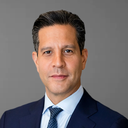I have a small bump on the bridge of my nose, which is more visible from one side. Will the nasal bone need to be broken in order to fix this?
Answers (14)
From board-certified doctors and trusted medical professionals
More Rhinoplasty Questions
See all Rhinoplasty Q&AWE SEND PRETTY
EMAILS
What’s trending? Who’s turning heads? Which TikTok myths need busting? We’ve got you. No fluff, no gatekeeping—just real talk. Get our free, unfiltered newsletter.










